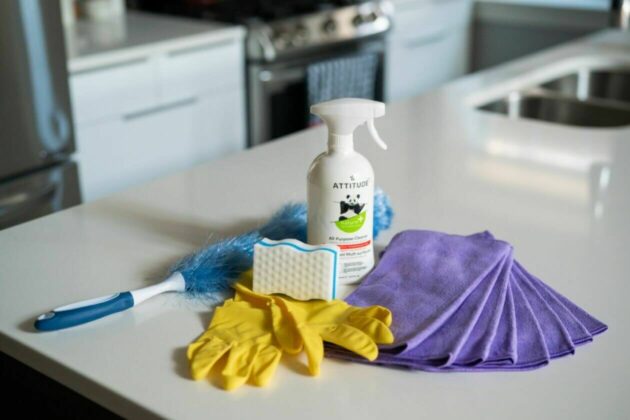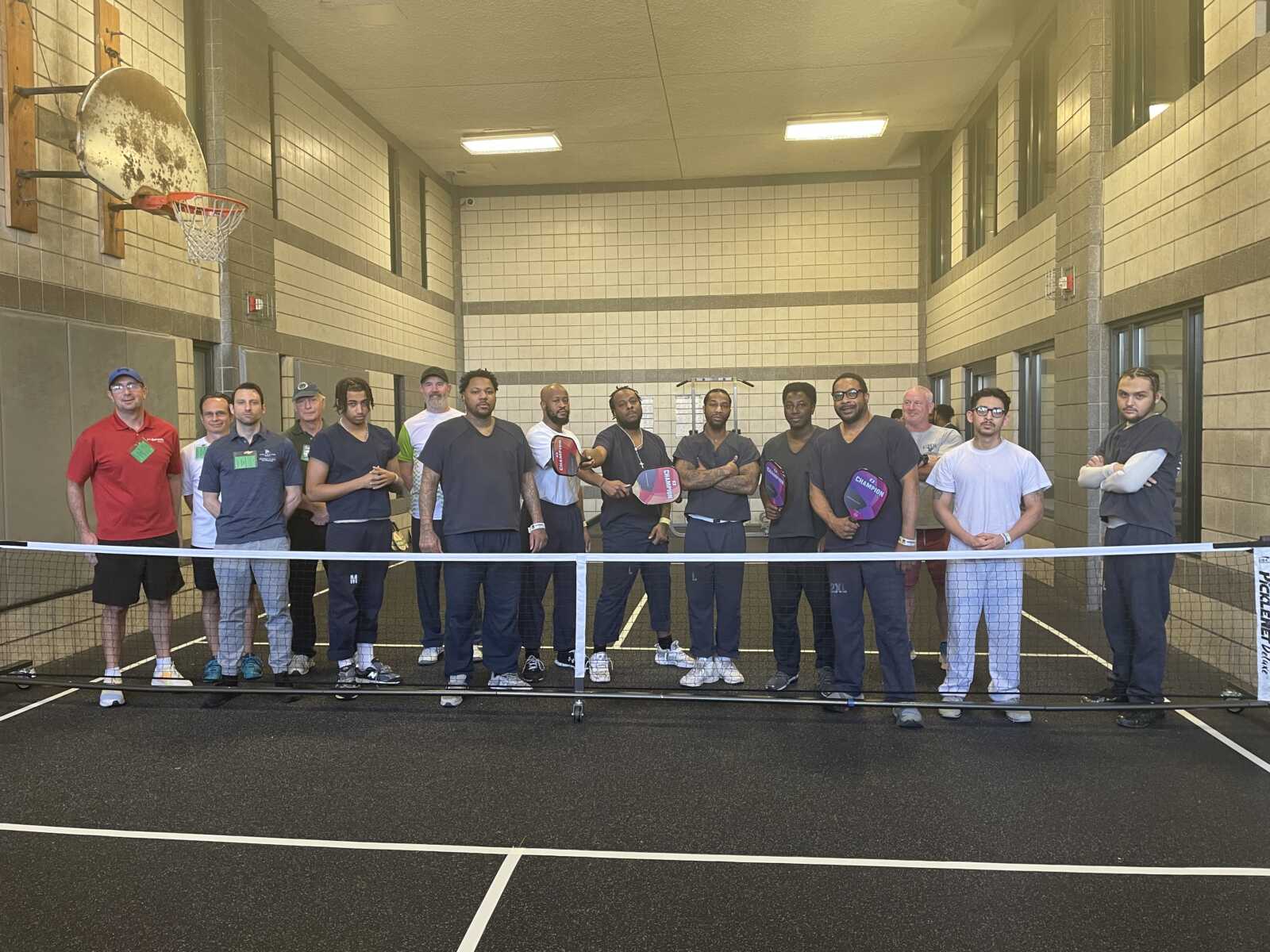
Editor’s Note: Healthy Paws is a column sponsored and written by the owners of Clarendon Animal Care, a full-service, general practice veterinary clinic. The clinic is located 3000 10th Street N., Suite B. and can be reached at 703-997-9776.
So you want to run with your dog?
Running with your dog can be great exercise for both of you, especially since most pets don’t get the opportunity to really stretch their legs as much as they like living in the more urban environment that we do. We’ve put together a few tips to keep your pup safe, happy and healthy while engaging in an running regimen:
AGE — The first thing to take into consideration when considering running with your pet is the age of your pet. Dogs should be near skeletal maturity before any sort of serious running routine is started (this can be 9-12 months in a smaller breed dog, but not until closer to 18-24 months in a large/giant breed dog). Short, relaxed runs are okay starting at around 9 months for most breeds.
TRAINING — It is important that your dog has basic leash and obedience manners in order for you to safely run with them. If he/she is pulling and barking uncontrollably at every dog or person you pass, this will not likely lead to a safe, fun or efficient work-out for you.
ENDURANCE — Just as we need to work up our endurance, so do our pets! As a very general rule, we recommend starting with 10 minutes of exercise, and working up in 5 minute increments over the course of each week until you reach your desired time/distance. There is no exact formula for how much a dog can do, so it is important to watch for your dog for signs of exhaustion — these may include lagging behind, stopping to catch their breath, prolonged panting post-exercise, lameness associated with exercise, or coughing or labored breathing.
WEATHER — Again, just as for us, the time of day/year is important to take into consideration. As a general rule of thumb, if it is a hot day outside, place your hand directly on the cement. If you cannot keep your hand on the cement for 5 full seconds, then it is too hot for a dog’s paws. It is also preferred to run early in the morning or later in the evening, when the sun has gone down when it is >75 degrees outside. Humidity also plays a huge role for dogs as they do not get rid of body heat in any significant fashion through sweating. Sweating is important for evaporative cooling — but since they really only sweat in their feet and most of their evaporative cooling is done through panting — they are working with a really small surface area to get rid of heat. When it is very humid out — that evaporative cooling mechanism doesn’t work well at all — which means heat transfer doesn’t work well. This is why in the DC summers, even in the air conditioning, dogs tend to act hot (panting, wanting to sit near fans, etc…). It’s cooler inside, but the humidity is still much higher than in the winter at similar temperatures and so they have a harder time staying cool.
INJURIES — The weekend warrior or rare/intermittent/poor training is, similar to us, one of the main causes of musculoskeletal injuries in our dogs. We can’t expect a dog with little training to up and run without minimally being sore afterward. Other injuries we can see from a lack of training and conditioning are cruciate injuries (i.e. ACL tears), meniscal injuries, as well as any number of muscle, ligament and tendon sprains and strains.
In addition to the musculoskeletal system — we can see dogs injure their foot pads from running on rough/abrasive surfaces; or even burn their pads from running on hot surfaces. These injuries tend to hurt the worst a few hours after the happen and can lead to significant pain as well as secondary infection.
Just like you or I, dogs also need to be kept hydrated. Dehydration and overheating are two of the most common non-orthopedic problems that we see dogs present for when they are not appropriately conditioned for their run, when they are pushed too hard or when they are run in high heat or humidity.
Individual health concerns to consider are health issues (such as heart disease, kidney disease and breed type). Dogs with underlying medical conditions often need to go at a slower pace and go shorter distances. Brachycephalic breeds (i.e. “smoosh-faced”) physically cannot get the same amount of oxygen through their nose/mouth and into their lungs as a dog with normal conformation and are at risk of overheating, fainting or developing significant respiratory problems if they are pushed too hard.
INDIVIDUAL TEMPERAMENT/DRIVE — this may seem a little silly because we’re talking about dogs, right? Don’t they all want to run? Well, actually…No. Some dogs just won’t ever be good running buddies, and that’s okay. Some dogs will be on the other side of the spectrum and will be so devoted to you and the run that they will end up pushing themselves to significant injury. Know your pet and their individual drive and respect that when training.
Recent Stories

Unlike our competitors, Well-Paid Maids doesn’t clean your home with harsh chemicals. Instead, we handpick cleaning products rated “safest” by the Environmental Working Group, the leading rating organization regarding product safety.
The reason is threefold.
First, using safe cleaning products ensures toxic chemicals won’t leak into waterways or harm wildlife if disposed of improperly.
Second, it’s better for you and your family. Fragrant chemicals in surface cleaners can expose you to a similar amount of pollutant particles as a busy city road, New Scientist reported.

Northern Virginia Family Practice (NVFP), known for its comprehensive concierge healthcare, is thrilled to introduce Mark Sullivan, MD as the newest member of its family medicine team.
Dr. Sullivan brings a wealth of experience in family medicine, underpinned by a passion for delivering personalized, patient-centered care. He has a distinguished background in managing various medical conditions, emphasizing preventive care, health education and chronic disease management. Dr. Sullivan is adept at employing the latest medical research and technologies to enhance patient outcomes.
Beyond his medical expertise, Dr. Sullivan is committed to the well-being of his community, demonstrating this through his active engagement in local health initiatives and educational programs. His approach to medicine is holistic, focusing on integrating physical, mental and emotional health and patient education to achieve optimal patient wellness.
Dr. Sullivan is now accepting new patients at their newly established Arlington office at 2445 Army Navy Drive, Arlington, VA, 22206. The office, known for its patient-friendly amenities and state-of-the-art medical facilities, continues to provide the exceptional, personalized care NVFP is known for in its newly upgraded Arlington location.
Sweeney Todd
A victim of a gross injustice that robbed him of his wife and child, Sweeney Todd sets about exacting a terrible revenge on society.
Fascination
Goth-Dark Wave Dance Party with Belly Dancing and Drag King Show.
Part of OurAlternative Thursdays for Alternave People with Alternative Lifestyles
Performances By
Belladonna and the Nightshades
Ya Meena
Drag King - Ken Vegas
DJ Michelle Guided







